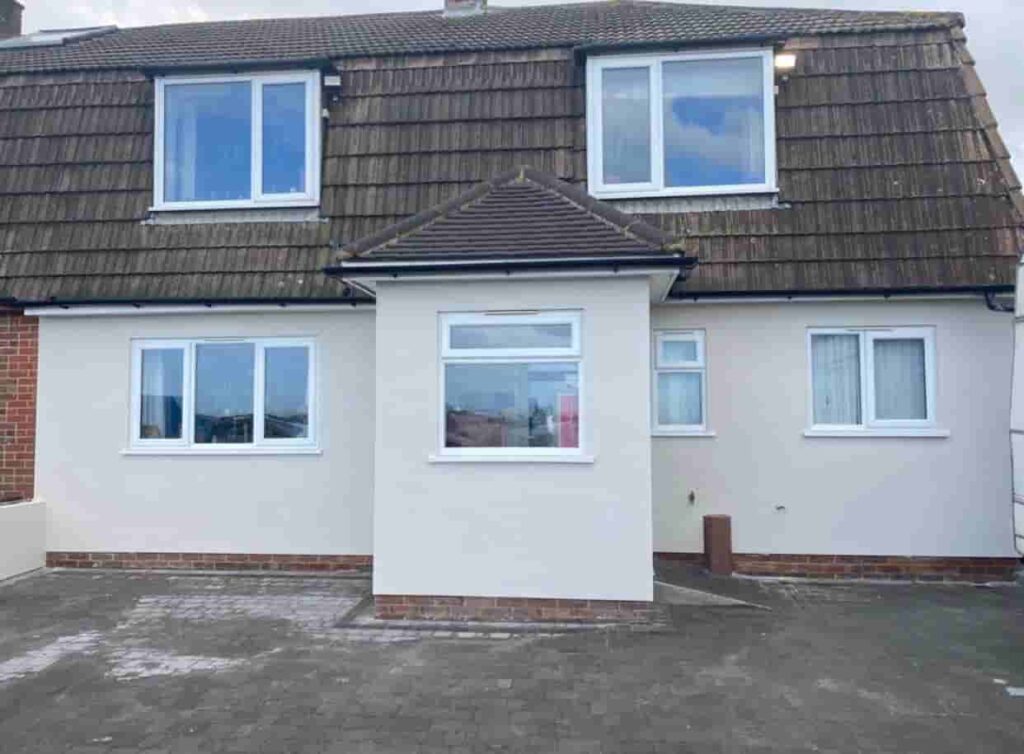Introduction: Knowing how to perform temporary repairs during a roofing emergency can prevent further damage to your home until professional help arrives. At Newark on Trent Roofing Repairs, we understand the urgency of promptly addressing roof issues. Here are some DIY emergency roof repair tips to help you manage unexpected situations effectively:
1. Safety First
Before attempting any repairs, prioritise safety for yourself and others:
- Assess Conditions: Only attempt repairs if it is safe to do so. Avoid working on the roof during adverse weather conditions such as heavy rain, strong winds, or lightning.
- Use Proper Equipment: To protect yourself from potential hazards, wear sturdy shoes with good grip, safety goggles, and gloves.
2. Temporary Patching
If you notice a leak or damage that needs immediate attention, consider these temporary patching methods:
- Tarping: Cover the damaged area with a large tarp or heavy-duty plastic sheeting. Secure the tarp with nails or heavy objects to prevent it from blowing away.
- Roofing Cement: To temporarily seal leaks, apply roofing cement generously around damaged shingles, flashing, or vents. Use a putty knife to spread the cement evenly and ensure a tight seal.
3. Clear Debris
Clearing debris from the roof and gutters can prevent water backup and further damage:
- Remove Branches: Trim overhanging branches that could scratch or damage the roof during storms.
- Clean Gutters: Clear leaves, twigs, and other debris from gutters and downspouts to maintain proper drainage and prevent water from seeping under shingles.
4. Secure Loose Shingles
If you notice loose or missing shingles, take steps to secure them temporarily:
- Replace Missing Shingles: If spare shingles are available, replace missing ones by sliding them into place and securing them with roofing nails.
- Secure Loose Shingles: Use roofing nails to secure loose shingles back into position. Apply roofing cement underneath and around the edges for added stability.
5. Inspect the Attic and Interior
Check your attic and interior spaces for signs of water leaks or damage:
- Water Stains: Look for water stains on ceilings, walls, or attic insulation, indicating potential roof leaks.
- Mould or Mildew: Check for mould growth or musty odours, which can signal prolonged moisture exposure due to roof leaks.
6. Contact Professional Help
While DIY measures can provide temporary relief, it’s crucial to seek professional assistance for permanent repairs:
- Emergency Roofing Services: Contact Newark on Trent Roofing Repairs for emergency roof repairs. Our experienced team can assess the damage, provide comprehensive repairs, and restore your roof to optimal condition.
- Insurance Claims: Document the damage with photographs and keep records of repair expenses for insurance purposes. Inform your insurance provider promptly to begin the claims process if needed.
Conclusion: Handling a roofing emergency requires quick action and careful attention to safety and temporary repairs. At Newark on Trent Roofing Repairs, we are committed to helping homeowners safeguard their homes with prompt and reliable roofing services.
Call us on: 01636 556 194
Click here to find out more about Newark on Trent Roofing Repairs
Click here to complete our contact form and see how we can help you with your roofing needs.

